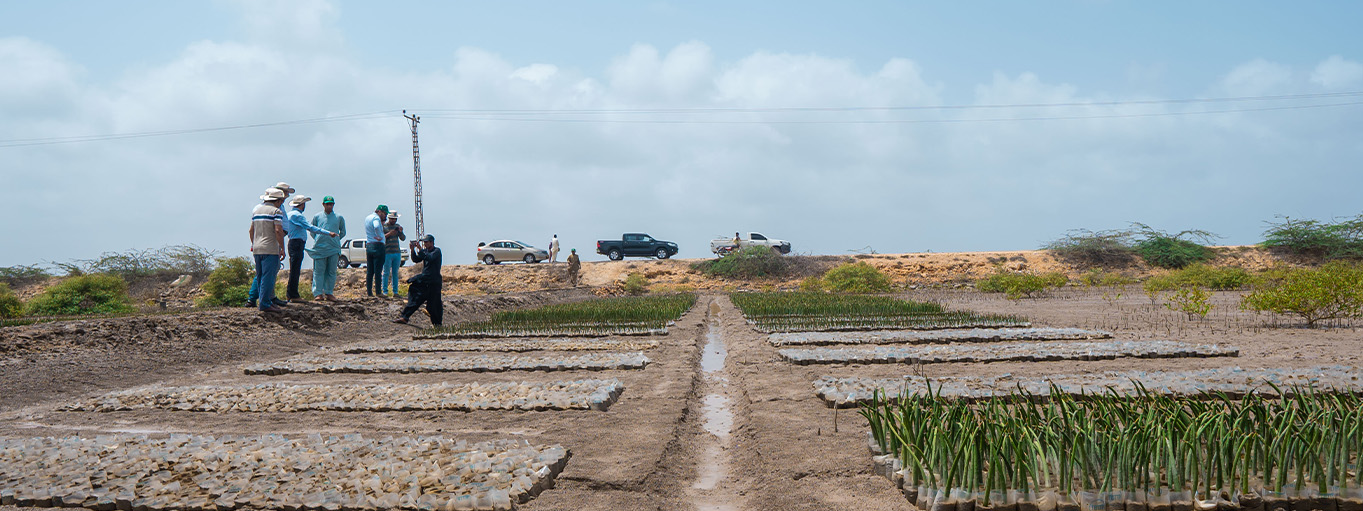Delta Blue, Pakistan
Our investment in the world’s largest mangrove forest restoration project.

Developing and delivering high quality nature-based carbon removals projects is a key pillar of our energy transition strategy.
Not only do these programmes sequester carbon from the atmosphere, they also restore ecosystems, providing enhanced biodiversity outcomes and adaptation benefits.
One of our projects is Delta Blue Carbon, the world’s largest mangrove restoration project.
Mangrove forests are incredibly effective carbon sinks – studies have found that they can hold up to four times more carbon than other tropical rainforests.
Over the past six years, Delta Blue Carbon has planted tens of millions of mangrove seedlings on the south-east coast of Sindh, a province of Pakistan, restoring more than 75,000 hectares of degraded mangrove forests and tidal wetlands.
Delta Blue will eventually expand to cover 350,000 hectares – an area larger than Luxembourg – sequestering an estimated 128 million tonnes of CO2 across a 60-year lifetime.
Trafigura is the anchor off-taker, or buyer, of the project’s carbon credits. The project has also received formal authorisation from the government of Pakistan to operate in global voluntary markets.
Delta Blue Carbon is an example of how the public and private sectors can work together to scale-up carbon removals, build climate resilience and benefit local communities
“The Delta Blue Carbon Project is exceptional in both its scale and execution. Our investment, alongside others, will enable this work to continue to deliver community, biodiversity and climate benefits, producing much-needed carbon removals as the world progresses toward net zero.”
Hannah Hauman
Global Head of Carbon Trading
You may also be interested in
Explore our publications and get the latest news and insights.